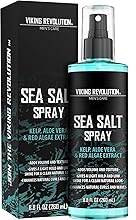
Am I allowed to water my lawn? Understand how B.C.'s drought is affecting your community
CBC
This week, British Columbians heard some troubling news about drought conditions affecting large parts of the province, bringing concerns about water scarcity and possible restrictions.
Officials have warned of a "very serious drought season that will require action for everyone" and asked residents to take shorter showers, limit lawn watering and only do laundry when they have a full load.
Water-intensive oil and gas operations have already had restrictions imposed on them by the B.C. Energy Regulator and more limits on residential water use may be in the future.
But sorting out how the drought is affecting different parts of the province and what that means for residents of those regions isn't particularly straightforward.
To shed some light on the situation, CBC News spoke with Jonathan Boyd, a hydrologist with the River Forecast Centre.
"I can understand the confusion," he said. "Of course, the recommendation of conservation should be applied every summer in British Columbia, no matter what the situation is."
Here, he answers some common questions about understanding B.C.'s latest drought.
When Minister of Emergency Management and Climate Readiness Bowinn Ma said that "over two-thirds of our water basins are in Level 4 or 5" drought, she was referring to the 34 regional divisions the province has made for drought management purposes.
Boyd said that, in most cases, it means the same thing as a watershed or a catchment area.
"Essentially," Boyd explained, "all of the water that would drop on the land that then might end up in the same river constitutes what would be a water basin."
But that's not true in all cases, he added. Some of the province's so-called water basins are actually geographical regions, like Haida Gwaii or east and west Vancouver Island, which aren't connected to specific rivers.
The B.C. Drought Information Portal is probably the best place to start. It includes a map showing the outlines of the water basins, with their current drought levels, ranging from "adverse impacts rare" at Level 1 to "adverse impacts almost certain" at Level 5.
Most major cities, including those in the Lower Mainland and on Vancouver Island, sit entirely within a single water basin. On the other hand, places like Prince George and Kamloops are divided — a reminder that cities are often settled at the confluence of two or more river systems.
There's a provincial drought technical working group that meets every two weeks beginning in the late spring or early summer to work this out, Boyd explained.





















 Run 3 Space | Play Space Running Game
Run 3 Space | Play Space Running Game Traffic Jam 3D | Online Racing Game
Traffic Jam 3D | Online Racing Game Duck Hunt | Play Old Classic Game
Duck Hunt | Play Old Classic Game











